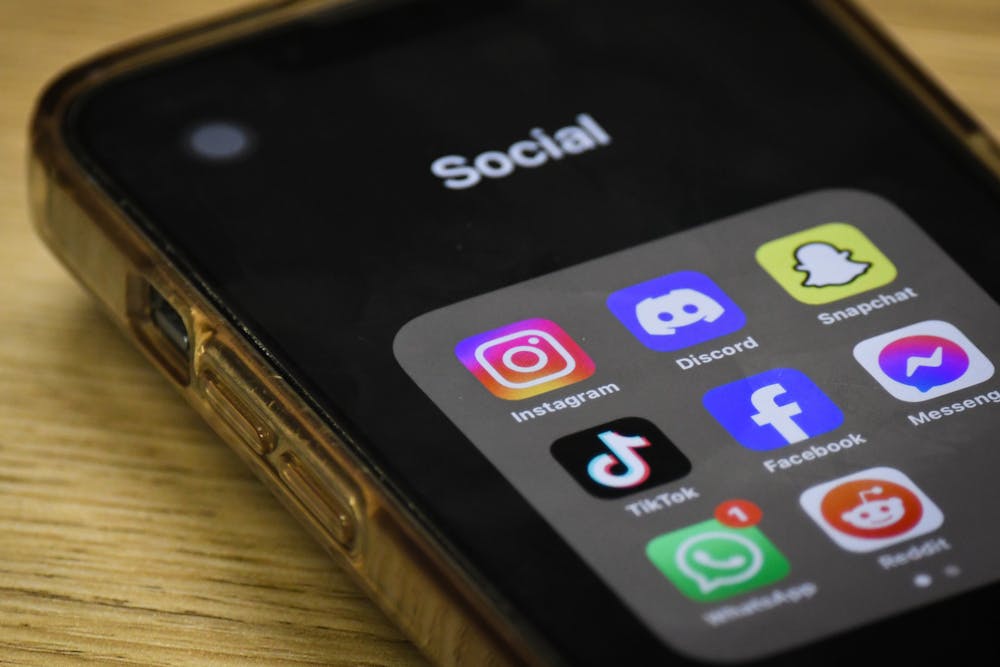
In a world where people constantly seek community, affinity, and belonging, social media has become an easily accessible hub for pursuing individuals. At times of global crises, people often instinctively reach for their phones to educate themselves on ongoing issues.
Many people argue that social media platforms are not the appropriate setting for such politically charged conversations. They see using Instagram as an outlet for discussions as critical and complicated as the Israeli-Hamas War or genocide in Sudan as a sheepish way to express one’s beliefs or political standing.
Hiding under the veil of anonymity offered by some social media platforms is often considered cowardly, and I too am critical of using what are meant to be lighthearted content-sharing platforms for serious political issues. And though social media should be used to share one’s interests, it’s widely accepted that no productive political rhetoric can truly take place on these platforms. While I recognize the validity of their points, I wholeheartedly believe that social media is an extremely powerful tool for everyday people to utilize during times of global upheaval.
In my personal experience, social media has become my greatest informative weapon as a Penn student. Every day of the last two months or so, I have repeatedly posted and reposted informative graphics, videos, pictures, and links describing the ongoing genocide in the ethnically Armenian autonomous region of Artsakh. While there were times when I felt that my activity on social media was futile, I stood corrected after seeing its eminent impact.
I did not expect fellow Penn students to know much about Artsakh or Azerbaijan’s history of genocidal activity and ethnic cleansing in the area. But I expected even less that my peers would be so engaged and active in their efforts to inform themselves about the topic after seeing my and other Armenian students’ posts. Countless Penn peers swiped up on my pedagogical stories and shared their condolences and prayers, offered help in various forms, and asked how they could learn more about the crisis. Many of my followers even took the time to thank me for spreading awareness of the crisis and informed me that they never would have known about it if it weren’t for the information I had shared on my social media.
What’s more, when I took to Instagram to start a fundraiser for Artsakh Humanitarian Relief with the Penn Armenian Students Association account, I was elated to see how many people in the Penn community came together to raise over $500 for the forcibly displaced Armenian families. Multiple people in the Penn community from diverse backgrounds pitched in $5, $10, or $15 and sent their money alongside encouraging messages that relayed their solidarity with the Armenian cause and community.
In a society where crises like the second Armenian genocide lack media coverage and are overshadowed by white conflicts, it is up to individual communities to raise awareness for the ongoing atrocities their people face. As a diasporan Armenian, far removed from my war-torn homeland, it’s easy to feel helpless while my people decrease in numbers each day under Ilham Aliyev’s genocidal campaign. After donating and volunteering to send humanitarian aid, diasporan Armenians like myself find themselves looking for ways to help their brothers and sisters back home. At times like these, turning to social media becomes the most effective plan of action.
At the end of the day, it’s true that the political discourse shared on social media often lacks real productivity and tangible effects. Moreover, it’s also true that social media can be just as effective at spreading misinformation and fake stories that lack credibility as it is at raising awareness. Yet, in this political climate, it is prudent to use social media to share what matters to you and shed light on underrepresented topics.
The artificial yet seemingly tangible circles constructed through social media provide everyday users with a group of people to relate to, communicate with, and learn from. In its best form, it allows for diverse virtual communities to interact, promoting casual discourse about serious topics that matter to each of them. Facilitating a meaningful impact has become easier than ever. Thus, I earnestly urge you to partake in these conversations by reading the contributions posted by your peers and subsequently doing your part in sharing their truths.
SOSE HOVANNISIAN is a College sophomore majoring in Communications and minoring in History and Consumer Psychology from Los Angeles, California. Her email is sosehova@sas.upenn.edu.
The Daily Pennsylvanian is an independent, student-run newspaper. Please consider making a donation to support the coverage that shapes the University. Your generosity ensures a future of strong journalism at Penn.
Donate



